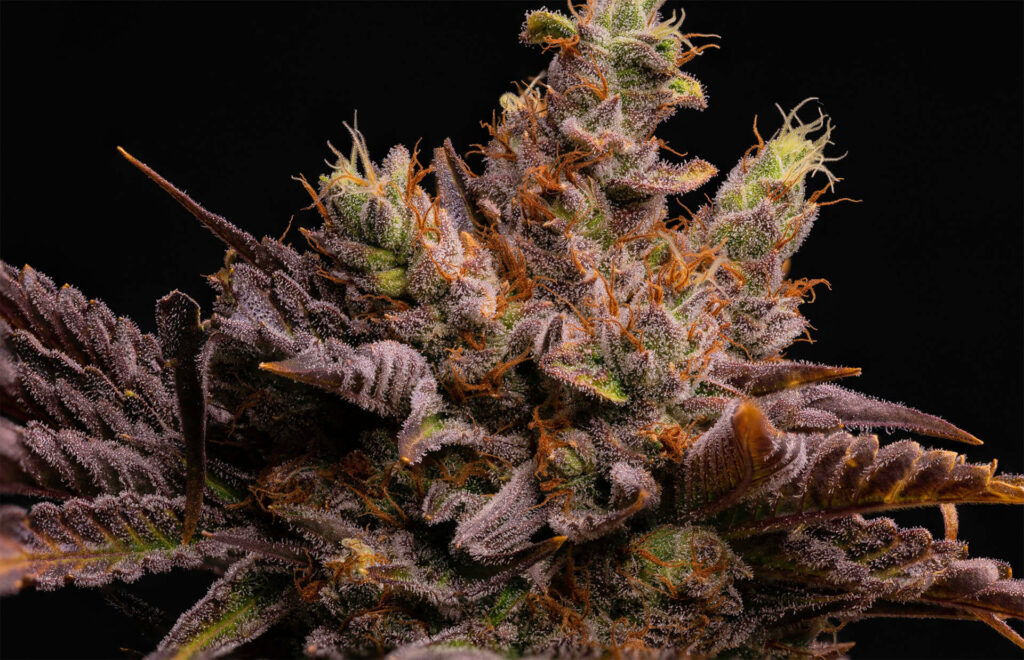
TERPENES
[Tur-peens]
My friend Bob can be slightly frustrating when we wade into conversations about cannabis. He’s older, proudly hard-headed, and steadfast in his view that all cultivars are silly, “Call it what you want, it all gets you high!” For Bob, everything’s gravy now that he can purchase recreationally in his home state of Massachusetts. And THC (the psychoactive cannabinoid) is all he cares about as every cannabis-inspired experience is met with a broad stroke. When I make a feeble attempt to respectfully disagree and explain the scientific nuances of terpenes, I’m automatically met with a wrist-flick brush-off borne from wishful ignorance. Fortunately though, science has a bias toward nuance. If Bob were willing to listen, I’d give him the rap about how THC may be responsible for getting him high, but terpenes help guide the high.
WHAT ARE TERPENES, YOU ASK?
Terpenes are the essential oils found in Cannabis which help produce smell and flavor. Terpenes are also responsible for several of the effects of Cannabis.
If we were to distill down the factors in what gives an individual the effects of being “high”, it breaks down to the two major compounds in Cannabis: Cannabinoids and Terpenes. An effective, perhaps overly-simplistic parallel would be imagining Cannabis as a train (not strain). Cannabinoids (the compound that gives you the sensation of being “high”) are the coal/diesel/electricity powering the engine, while the terpenes (the compound that provide distinctive effects) act as the conductor and tracks, guiding the train where to go. There’s a bevy of detailed information on the web about terpenesfor those interested in a deep dive.
At Insa, we’re slightly obsessed with terpenes. So much so that, as far as we know, we’re one of only two recreational dispensaries in Massachusetts that tests our flower for terpene percentages.
While there are over 200 terpenes in the Cannabis plant, for the sake of brevity, we boil the concept down to six major ones…
Caryophyllene – Spicy, peppery, woody, and herbaceous, this terpene is known to elevate moods, alleviate depression symptoms, and act as an effective analgesic. High percentages of caryophyllene are also found in black pepper and cinnamon.
Humulene – Perhaps unbeknownst to IPA lovers, they’re likely to find humulene familiar, as it’s the “hops terpene”. Earthy and herbal, humulene is known to help decrease alcohol cravings and appetite.
Linalool – Remarkably floral, linalool is the dominant terpene found in lavender oil. Therefore cultivars with high percentages are heralded for their calming effects and often used as sleep aids.
Limonene – On the other end of the spectrum from linalool is limonene. Found mostly in sativa-dominant cultivars, limonene is associated with a strong burst of energy. Zesty, citrusy, this terpene can help as a mood elevator and nausea reliever.
Myrcene – Known as the “indica terpene”, especially when taken in low doses, myrcene’s primary purpose is as an analgesic. Known to amplify other terpenes by facilitating the flow of chemicals through the brain, myrcene is a terpene that acts like an Indica in low doses and a sativa in higher doses. Besides Cannabis, high levels of myrcene are found in mangoes.
Pinene – Along with limonene, pinene is found mostly in sativa-dominant cultivars. As the name suggests, the aroma is piney, musky, and woody. Pinene’s effects have been said to boost energy, and increase focus. Another benefit to pinene is that it acts as a bronchodilator, which helps clear and open up the lungs.
On the bottom of every can of Insa flower, we list terpene percentages, designed to steer a consumer toward their desired effects.

